Follow us on social networks
Marketplace
The term "Latin American dances" as a generic term for Samba, Cha Cha Cha, Rumba, Paso doble and Jive is, strictly speaking, not entirely correct with regard to the origin of these dances. Only the samba and rumba are truly Latin American, as is the mambo, which became fashionable again with the wave of films in the 1980s. The Cha Cha Cha, a dance constructed from the Mambo, can still be understood as Latin American in a broader sense. Jive in its current form is an artefact of English dance teachers who used it to make Boogie-Woogie, Jitterbug and Rock'n'Roll, which originated in the USA from African movement elements, socially acceptable - one should actually call it a North American dance.
The history of Latin American dances is still quite young, despite very old roots. Thus, these dances could only emerge after the liberation of South America by Simon Bolivar (1st quarter of the 19th century) and the resulting mixing of cultures. The combination of African rhythms, European melodies and many other influences from all over the world (from jazz to China) finally resulted in today's Latin American dances.
The samba, first mentioned in 1883, is in its origin a collective name for many dance forms that were brought to their new homeland Brazil by African slaves from the Congo, Sudan and Angola in the 19th century. The name of this dance form is derived from the African word "semba" (designation for typical hip movements, Angolan Bantu language: abdominal and pelvic movements, Portuguese-Brazilian: dance). The ecstasy, the intoxicating dance was the focus of the cultic festivals, especially those of the Bantu peoples. As an African-Portuguese hybrid form, the maxixe - a close couple dance - came to Europe from Brazil around 1910, but it had difficulty establishing itself.
It was only after the Second World War that the samba became an integral part of every dance band. Around 1948/49, it achieved great popularity in a very simplified form (two-step samba). The dance schools successfully included the samba in their programmes and it became established on the dance floor.
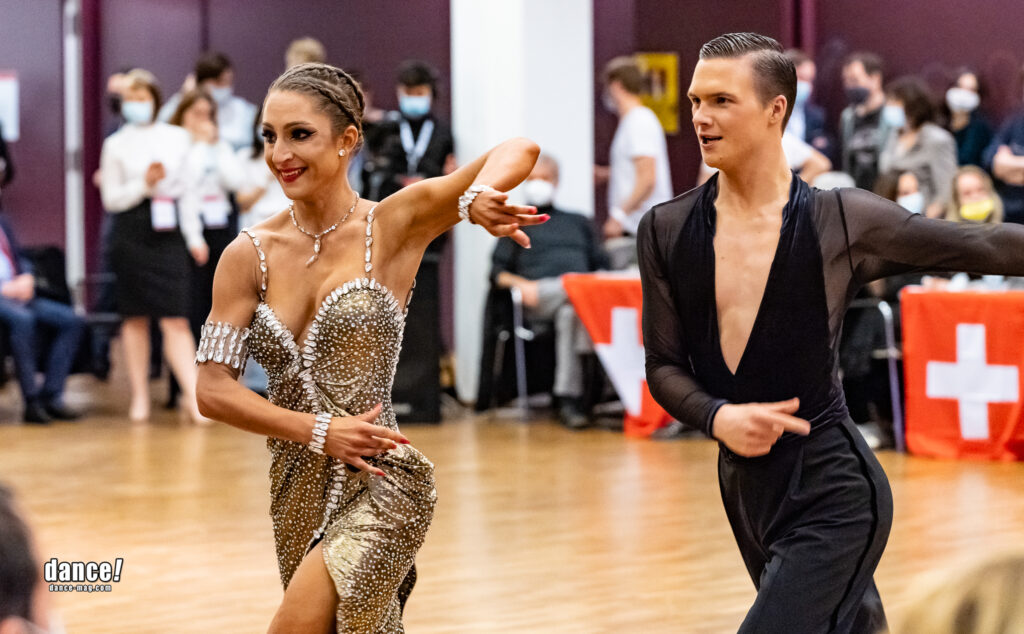
The Cha Cha Cha is considered to be an artificial creation, a derivative of the Rumba and the Mambo. The Cuban musician Enrique Jorrin from Havana is named as the inventor. In 1953, he created the slower Mambo Cha Cha in place of the Mambo, which was played too fast and did not really catch on. The Palladium on Broadway in New York City is considered the birthplace of the Cha Cha Cha. The word Cha Cha Cha can be seen here as a rhythmic component of the music, which is clearly "spoken" by the musicians and "interpreted" by the dancers with three small steps.
Starting in Cuba, music and dance first took hold of North America, where the Cha Cha Cha became the number one fashion dance from 1954. But Europe was also open to all Latin American music and dance innovations. Due to its clear rhythm and its cheerful figures rich in variation, the Cha Cha Cha very quickly made its breakthrough.
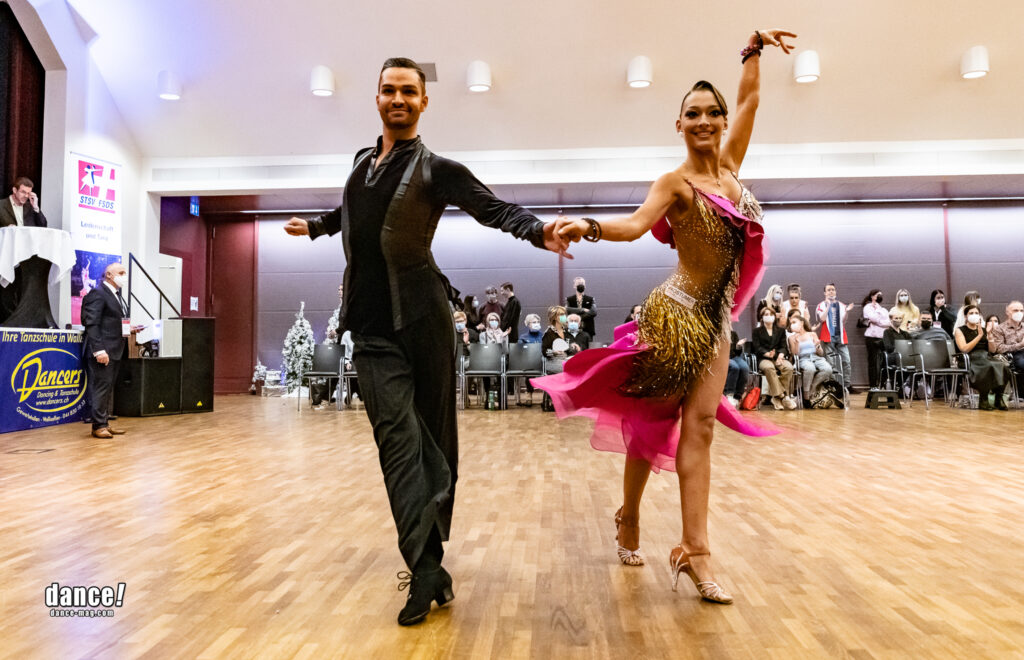
The rumba is an erotic courtship dance from Cuba, originating from rural courtship dances such as chica and yuca. In its origin, rumba is a collective term for the dance interpretation of similar rhythms, e.g. El Son, Bolero, Guaracha, Mambo, Beguine and Habanera. Like tango or milonga, the word rumba originally meant something like celebration and dance. It is not known since when the word rumba was used. In 1882 it was mentioned for the first time in a poem of the same name. The dance descriptions of the 19th century speak of passionate courtship dances, the woman's striving to seduce the man with flashy hip movements. In the 1930s, all the rhythms and dances from Cuba that became known abroad were grouped together under the term rumba. This explains why "our" rumba, which - in contrast to the Cuban rumba - is clearly derived rhythmically and in its basic structures from Son, bears a name that actually belongs to a completely different music ("Cuban" bolero) and the dances associated with it.
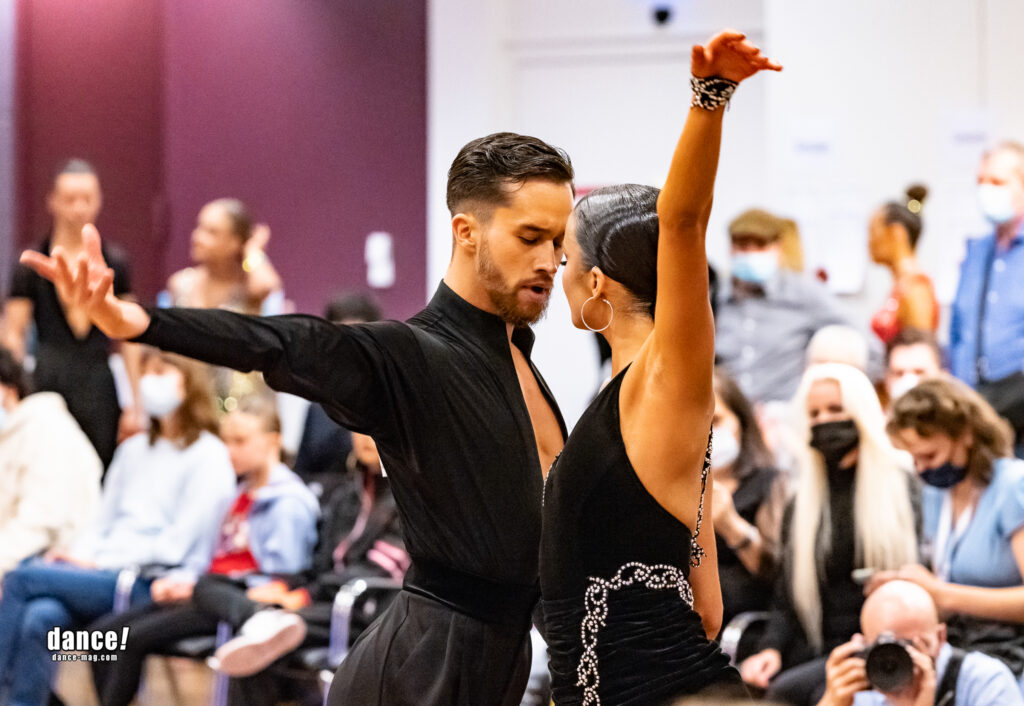
In its origins, the paso doble (double step) is a Spanish dance to Spanish marching music, but it is not seen on any dance floor in Spain itself - if it is, then only in an independent version on stage. It was already known as a bullfighting pantomime in the 1920s. In its current form, it was created in France, where it was first danced primarily by artists before it was discovered as a show dance and later as a ballroom dance. Because of this, there are many French figure names.
The Paso Doble represents a bullfight, with the gentleman taking on the role of the torero and the lady embodying the torero's red cloth. The gentleman and lady thus move together around an imaginary bull, using flamenco elements and stylised figures taken from arena fighting.
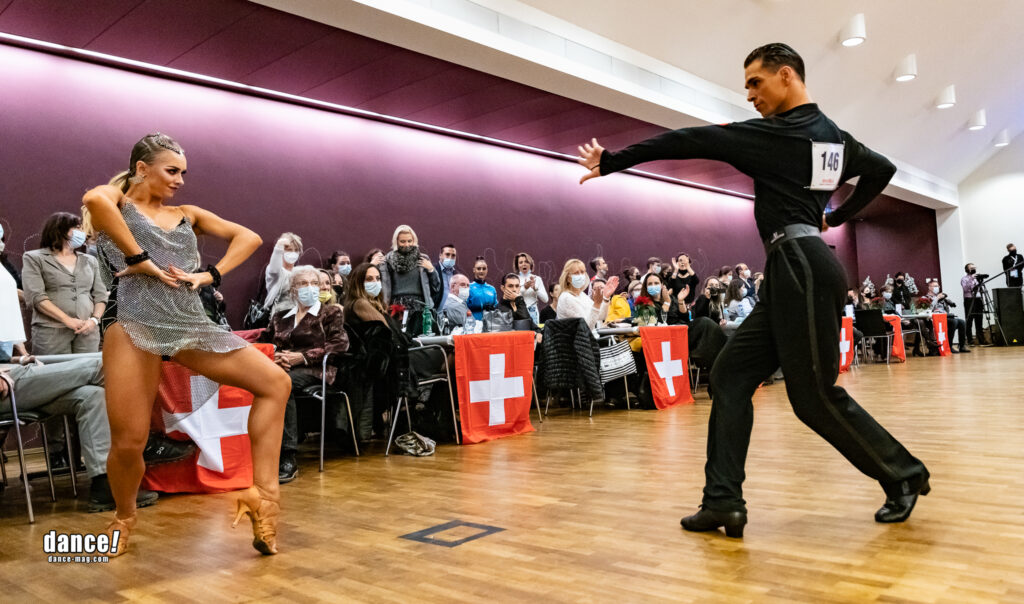
Today, jive is the internationally recognised name for a dance that has many related predecessors of African-American origin. These include Lindy Hop, Blues and Swing in the early 1930s, Boogie or Boogie-Woogie, Jitterbug (another name for Lindy Hop) and Be-Bop in the 1940s, followed by Rock'n'Roll in the 1950s. Characteristic of all these dance forms is the stimulating music that captivates everyone because of its rhythmic accentuation.
The dances, which are native to the USA, were brought to Europe mainly by American soldiers around 1940, where they quickly became very popular with young people due to their open style of movement with acrobatic throws. Boogie became the dominant music after the war. As an "alien" dance, however, it did not only find friends. Critics were looking for a more moderate form to make this kind of dancing socially acceptable. It was English dance teachers who developed the elegant yet lively jive with somewhat slower music.
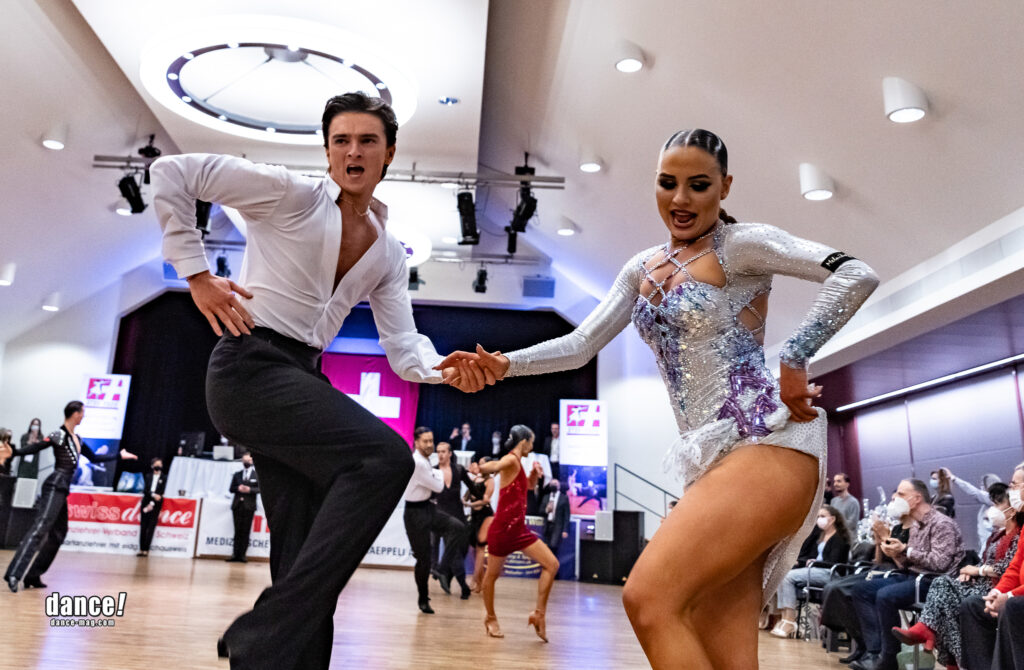
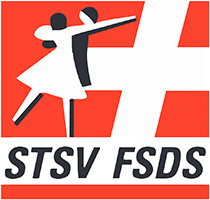
SWISS DANCESPORT FEDERATION
| Cookie | Dauer | Beschreibung |
|---|---|---|
| cookielawinfo-checkbox-analytics | 11 months | This cookie is set by GDPR Cookie Consent plugin. The cookie is used to store the user consent for the cookies in the category "Analytics". |
| cookielawinfo-checkbox-functional | 11 months | The cookie is set by GDPR cookie consent to record the user consent for the cookies in the category "Functional". |
| cookielawinfo-checkbox-necessary | 11 months | This cookie is set by GDPR Cookie Consent plugin. The cookie is used to store the user consent for the cookies in the category "Necessary". |
| cookielawinfo-checkbox-others | 11 months | This cookie is set by GDPR Cookie Consent plugin. The cookie is used to store the user consent for the cookies in the category "Other. |
| cookielawinfo-checkbox-performance | 11 months | This cookie is set by GDPR Cookie Consent plugin. The cookie is used to store the user consent for the cookies in the category "Performance". |
| viewed_cookie_policy | 11 months | The cookie is set by the GDPR Cookie Consent plugin and is used to store whether or not user has consented to the use of cookies. It does not store any personal data. |
Follow us on social networks
Marketplace

Together with our media partner Swiss Sport TV, we are offering an uncommented live stream with all decisions and award ceremonies from the Trafo Cup in Baden. So if you can't be there,
is nevertheless there live.
Sign up to receive updates, promotions, and sneak peaks of upcoming products. Plus 20% off your next order.